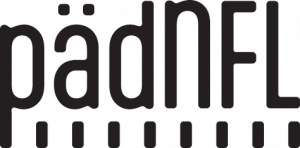What the rescuers say
Here is a small excerpt of feedback from users of the PädNFL children’s emergency line:
“A few years ago already, this tool really helped me a lot when a little girl aspirated heavily during a seizure, became hypoxic, and bradycardic. Never would I have been able to use formulas to calculate tube size/depth/med dosage so quickly in this situation.
Even in this age of apps and other tape measures, I don’t go on an emergency medical call without the PädNFL in my jacket pocket. I find it the most practical tool in real emergency situations, because only with it you don’t have to gather information from accompanying booklets, but have it in front of your eyes immediately after measuring.”
Christina Rothe
Emergency doctor I Werder
“After 35 years in clinical medicine, including 34 years in pediatrics and now 6 years as a pediatric emergency instructor at the Academy of Education for Health and Social Professions, patient safety has always been and continues to be an essential part of my work.
The PädNFL presented itself to me as the optimal solution after extensive research of all other available aids and was established as the standard equipment for the children’s emergency bag in the district of Mettmann.
withstands
, are optimal.
From my years of experience, it is desirable or necessary that wherever children are treated, a tool containing essential data and for safe dose finding of therapeutic agents be used.”
Erdmuth Schubert, MD
Pediatrician and lecturer I Bildungsakademie Mettmann
“Greece, with its many islands and many small towns, has many very small medical facilities. Pediatricians are not always on site, so small facilities often need support from our paediatric intensive care ward on the phone. We have translated Professor Kaufmann’s PaedER with his support and approval and introduced it in Greece to give our colleagues on the spot the best possible support for the treatment of seriously ill children. Supported by the PaedER, they can respond quickly, safely and accurately to all emergency situations.”
Dr. Aristoula Patsoura, MD
Director I Pediatric Intensive Care Unit P & A Kyriakou Children’s Hospital, Athens
“In emergency medicine, it is often difficult to quickly and reliably obtain information about the patient. However, in pediatric emergency medicine in particular, patient weight, for example, is often impossible or imprecise to obtain. Moreover, especially in a society in which obesity is also becoming increasingly prevalent in children, the actual weight, for example reported by the mother or available from the U-booklet, is of little help for the correct dosage of emergency medication, because according to the guideline ‘Medication Safety in Pediatric Anesthesia’ the normal weight should be used for medication dosage. The PedNFL provides both: the ability to determine a normal weight based on height without relying on the external history, and dosing recommendations based on this weight. We therefore now prefer to use the emergency ruler in our emergency department for this purpose. In the central OR, the PädOP anesthesia ruler has recently been made available to our less experienced staff as an additional aid.”
Lutz Müller-Lobeck, M.D.
Head physician of the pediatric anesthesia focus I Clinic for Anesthesiology and Surgical Intensive Care Medicine Klinikum Lippe GmbH
“In an emergency situation, you need simple and clear recommendations for action – all the more so when children are involved! The Pediatric Emergency Ruler is there when you need it most. Even if the cell phone battery is dead.”
Julius Wermelt, MD
Chief Physician of the Clinic for Anesthesia and Pediatric Anesthesia I Bürgerhospital and Clementine Kinderhospital gGmbH, Frankfurt a. M.






